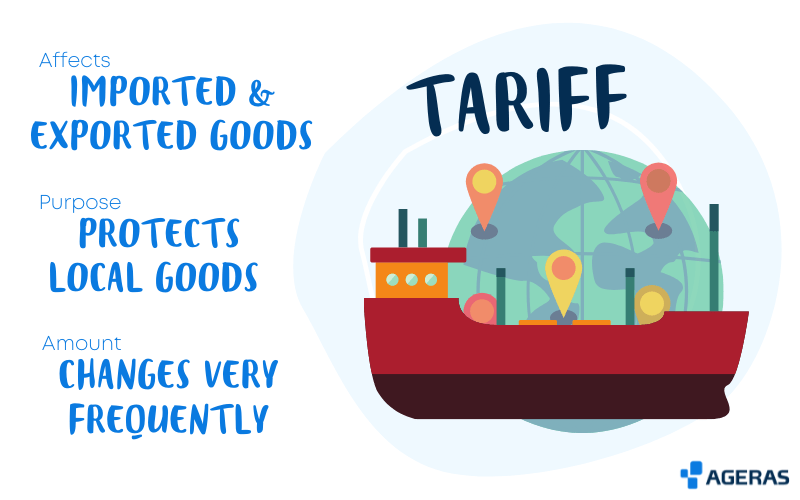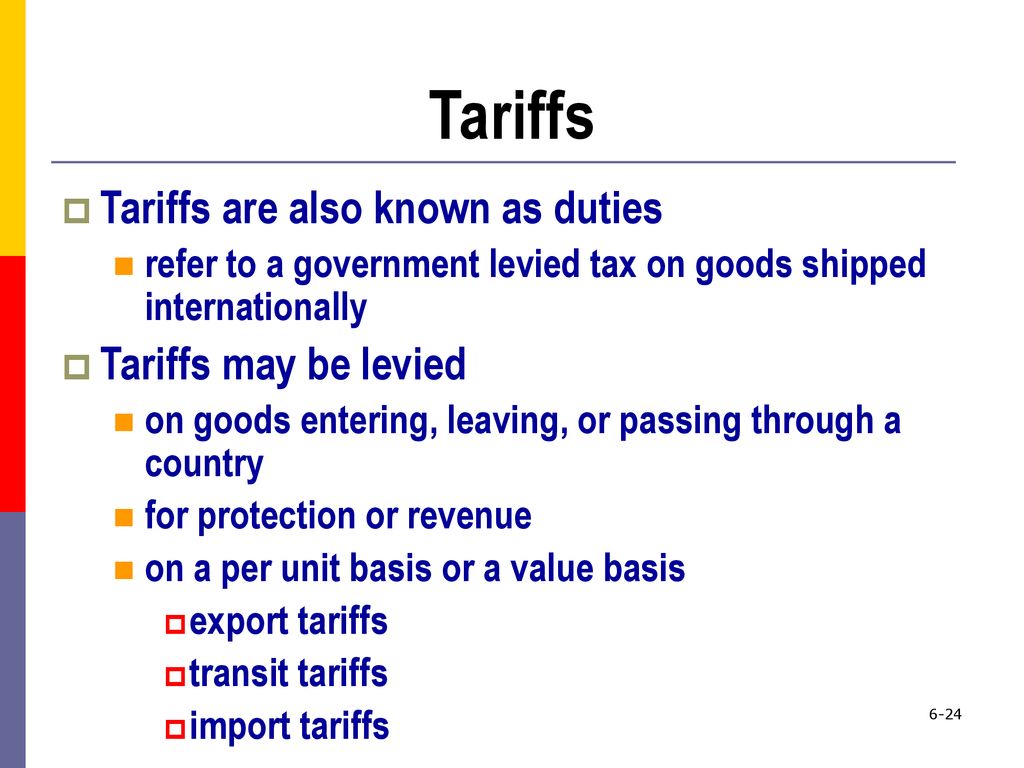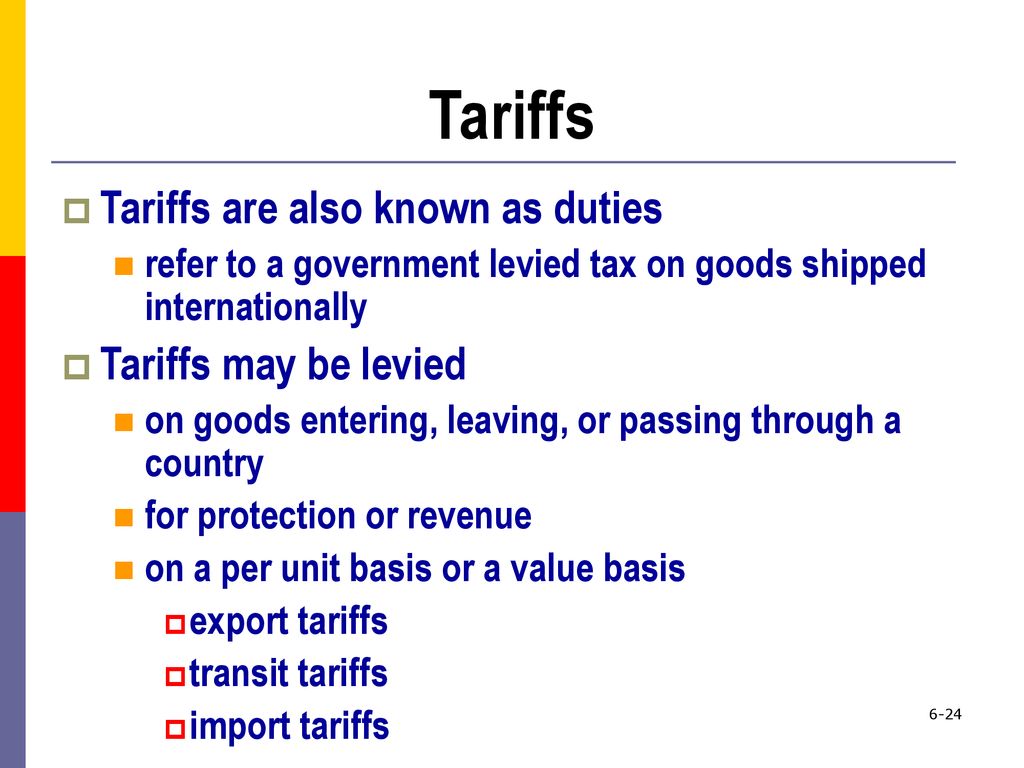What could get more expensive under trumps tariffs – What could get more expensive under Trump’s tariffs? This deep dive explores the potential price hikes on everything from imported goods to finished products, examining how tariffs might disrupt global supply chains and impact consumers. We’ll look at specific industries, the potential for supply chain disruptions, and the overall economic fallout. This isn’t just about theory; we’ll be examining real-world examples and potential price increases.
Trump-era tariffs, a controversial aspect of his presidency, targeted numerous imported goods. These tariffs aimed to protect domestic industries and reduce trade imbalances, but their effects rippled across the globe, impacting everything from raw materials to consumer products. The discussion will include detailed analysis of potential effects, from the impact on specific industries to the consumer price increases likely to result.
Goods Affected by Tariffs
Trump-era tariffs significantly impacted various sectors, altering global trade dynamics and consumer prices. Understanding the specific goods targeted and the potential ramifications is crucial for businesses and consumers alike. The aim here is to provide a clear overview of the types of goods affected, and how tariffs can cause ripples throughout supply chains.
Industries and Specific Goods Targeted
The effects of tariffs extended beyond general trade, impacting specific industries and product categories. Steel, aluminum, and agricultural products were among the most frequently targeted. Industries producing or relying on these goods experienced price increases, reduced competitiveness, and disruptions to their supply chains.
- Steel and Aluminum: Tariffs on steel and aluminum imports directly affected manufacturers relying on these materials, including automotive, construction, and appliance companies. Increased prices for raw materials translate into higher prices for finished goods. The tariffs’ effects were felt by a wide range of companies, demonstrating a broad impact.
- Agricultural Products: Tariffs on agricultural goods, such as soybeans, pork, and other agricultural products, created significant challenges for farmers and agricultural exporters. The tariffs impacted the price of these products for consumers, and reduced trade opportunities for American farmers.
- Machinery and Electronics: Tariffs on various machinery and electronic components, while not as prominent as in other sectors, still impacted the supply chains and costs for businesses using them.
Types of Goods Commonly Subject to Import Tariffs
Import tariffs are not limited to a single type of good. Raw materials, intermediate goods, and finished products are all potential targets. The choice of which goods to target is often influenced by political and economic considerations, including national security concerns or protectionist policies.
- Raw Materials: Tariffs on raw materials, like metals and minerals, can increase the cost of production for industries relying on them, leading to higher prices for consumers.
- Intermediate Goods: Tariffs on intermediate goods used in manufacturing processes, such as components or parts, can disrupt supply chains and increase production costs.
- Finished Products: Tariffs on finished products, including consumer goods, can raise prices at the retail level, affecting consumers directly.
Impact of Tariffs on Product Categories
The impact of tariffs on various product categories can be significant, impacting both producers and consumers. The following table provides a comparison of potential impacts across different product categories.
| Product Category | Potential Impact | Examples | Affected Countries |
|---|---|---|---|
| Steel | Increased prices for steel-using industries, reduced competitiveness for steel producers in protected markets. | Construction materials, automobiles, appliances | China, South Korea, etc. |
| Aluminum | Increased prices for aluminum-using industries, potentially reduced competitiveness in export markets. | Aerospace, construction, packaging | China, Canada, etc. |
| Agricultural Products (Soybeans) | Reduced export opportunities for American farmers, increased prices for consumers. | Soybean meal, oil | China |
| Electronics (Components) | Higher costs for electronics manufacturers, potential disruptions in supply chains. | Semiconductors, circuit boards | South Korea, Taiwan |
| Machinery | Higher costs for manufacturing industries, potential delays in production | Heavy machinery, tools | Germany, Japan, etc. |
Goods Whose Prices Could Rise Significantly Due to Tariffs
Tariffs often lead to a ripple effect through the supply chain, increasing the prices of related goods. The extent of the price increase depends on the tariff rate, the availability of alternative sources, and the competitiveness of the affected industry.
- Construction materials: Tariffs on steel and aluminum, key construction materials, will increase costs for construction projects.
- Automobiles: Tariffs on steel and other components increase the cost of manufacturing automobiles, impacting the retail price for consumers.
- Appliances: Increased prices for steel and aluminum, critical components in appliances, will lead to higher prices for refrigerators, washing machines, etc.
Potential for Supply Chain Disruptions Due to Tariffs
Tariffs can disrupt global supply chains, leading to shortages of goods and increased costs. Companies may need to find alternative suppliers, which can be time-consuming and costly.
Supply Chain Implications
Tariffs imposed by the Trump administration significantly impacted global supply chains, leading to disruptions, price hikes, and shifts in sourcing strategies. These ripple effects were felt across various sectors and countries, highlighting the intricate interconnectedness of international trade. The effects extended beyond the immediate participants, impacting consumers through higher costs for goods.
Disruptions to Global Supply Chains
Tariffs created uncertainty and complexity in global trade. Companies faced difficulties in forecasting demand and managing inventory. The need for alternative sourcing and increased logistical costs became apparent. This disruption led to delays in product delivery and increased the overall risk associated with international trade. For instance, automakers had to adjust their production schedules and sourcing strategies due to tariffs on steel and aluminum.
Price Increases Due to Tariffs
Tariffs directly increased the cost of imported goods. The additional taxes levied on imported products were passed on to consumers, leading to higher prices. Businesses absorbed some of the cost, but the majority was often reflected in the final price of the products. The impact was particularly noticeable on consumer goods, such as electronics and clothing, where tariffs affected the prices of key components.
Availability of Imported Goods
Tariffs can reduce the availability of imported goods. Businesses may choose to reduce imports due to the added cost and complexity, leading to shortages in the market. This is especially true for goods with limited domestic alternatives. Consumers might find certain products less readily available or face longer wait times.
Alternative Sourcing Strategies
Businesses were compelled to explore alternative sourcing strategies to mitigate the impact of tariffs. This included finding new suppliers in countries with lower tariffs or no tariffs at all. For example, companies might relocate production facilities or shift their supply chains to avoid tariff-affected regions. This could also involve finding alternative materials to reduce reliance on specific imports.
Effects on Different Countries and Regions
The effects of tariffs varied significantly across countries and regions. Countries heavily reliant on exports to the United States faced the most direct consequences. Developing nations, which often export raw materials and intermediate goods, also experienced challenges in accessing markets. The impacts were not uniform, with some industries and regions experiencing greater hardship than others.
Increased Prices for Consumers
Tariffs ultimately translate to higher prices for consumers. The added costs associated with tariffs are frequently absorbed by businesses or passed on to consumers through higher prices. This is true for a wide variety of products, from food and beverages to electronics and automobiles. This increase in cost affects the purchasing power of consumers, especially those with lower incomes.
Consumer Price Impacts

Tariffs, by increasing the cost of imported goods, inevitably translate to higher prices for consumers. This ripple effect, while often debated, is a tangible consequence of trade policies. The impact is not uniform across all products, and the magnitude of price increases varies depending on the tariff’s magnitude and the product’s import dependence.
Potential Impact on Consumer Goods Prices
Tariffs directly impact consumer goods prices by raising the cost of imported materials, components, or finished products. This increased cost is often passed on to the consumer, leading to higher retail prices. The degree to which tariffs are passed through to consumers depends on various factors, including the elasticity of demand for the affected goods, the ability of domestic producers to meet increased demand, and the presence of substitute products.
Illustration of Tariff Effects on Product Categories
The following table demonstrates a hypothetical scenario illustrating how tariffs might affect prices for different product categories. Note that these are illustrative examples and not predictions of actual price changes.
| Product Category | Pre-Tariff Price | Post-Tariff Price | Percentage Increase |
|---|---|---|---|
| Smartphones | $800 | $900 | 12.5% |
| Clothing (Imported) | $50 | $60 | 20% |
| Electronics (Components) | $100 | $120 | 20% |
| Toys (Imported) | $20 | $25 | 25% |
| Furniture (Imported) | $500 | $600 | 20% |
Decline in Consumer Purchasing Power
Tariffs, by increasing the price of goods, effectively reduce the purchasing power of consumers. A fixed income or a budget constrained by inflation will have less ability to acquire the same amount of goods. When essential goods see price increases, the impact on lower-income households can be particularly significant, as they often spend a larger portion of their income on these items.
Products Likely to See Significant Price Increases
Products heavily reliant on imports are most vulnerable to significant price increases. Examples include certain electronics, clothing, toys, and even some food items. The impact of tariffs on these items is directly linked to the extent of their reliance on imported materials.
Potential for Inflation Due to Tariffs
Tariffs can contribute to inflationary pressures in an economy. If tariffs lead to widespread price increases across various product categories, this can push overall inflation higher. The cumulative effect of multiple tariffs on different products can amplify the inflationary impact. The increase in prices, particularly for essential goods, can result in reduced consumer spending and negatively impact economic growth.
Consumer Behavior Shifts
Consumer behavior can shift in response to price changes driven by tariffs. Consumers might opt for cheaper alternatives, reduce their consumption of affected goods, or look for substitute products. These shifts in consumer behavior can affect sales volumes for businesses and create new market opportunities for substitute goods.
Trump’s tariffs could definitely make some things more expensive, from imported goods to everyday essentials. Luxury items, like the lavish mansion that Kris Jenner just listed for $13.5 million, Kris Jenner lists Keeping Up with the Kardashians mansion for 13.5 million , might also see a price hike. Ultimately, the ripple effect of tariffs could lead to higher prices across the board, impacting everyone, even those with high net worth.
Industry Responses and Adaptations
Navigating the complex landscape of international trade tariffs requires businesses to adapt and innovate. Companies are faced with the challenge of mitigating the negative impacts of tariffs on their bottom lines while maintaining competitiveness in a global market. This necessitates strategic adjustments in production, sourcing, pricing, and overall operational models. Companies must consider the ripple effects of tariffs across their supply chains, anticipating and proactively addressing potential disruptions.Companies are forced to become more agile and responsive to changing market dynamics, often necessitating a reevaluation of their entire business strategies.
Trump’s tariffs are likely to hike prices on imported goods, impacting everything from clothing to electronics. To stay informed, you can catch his speech to Congress Tuesday by checking out the details on how to watch it here. This speech might shed light on the reasoning behind these tariffs and their potential impact on consumer costs.
This includes exploring alternative sourcing strategies, diversifying supply chains, and adjusting pricing models to offset increased costs. The ultimate goal is to maintain profitability and market share in the face of tariff-induced complexities.
Strategies to Mitigate Tariff Impacts
Companies can employ several strategies to reduce the impact of tariffs. A key approach involves shifting production to regions with lower tariffs or no tariffs at all. This requires careful evaluation of labor costs, transportation expenses, and infrastructure quality in different locations. Another crucial strategy is exploring alternative suppliers to diversify sourcing and reduce dependence on a single region.
This diversification reduces vulnerability to disruptions in a single market.
Trump’s tariffs could definitely make some imports pricier, from foreign-made electronics to certain clothing items. Thinking about how to navigate these potential price hikes, a robust project management office (PMO) might become increasingly valuable for companies. A PMO can help businesses optimize supply chains and find alternative suppliers, mitigating the negative impact of rising costs. Ultimately, understanding these potential price fluctuations is crucial for effective financial planning, especially if you’re a business owner or a consumer trying to budget during this period of potential economic shifts.
creating project management office can help you prepare.
Potential Strategies to Maintain Competitiveness
Maintaining competitiveness under tariffs necessitates a multi-faceted approach. Companies should focus on improving efficiency in their production processes to reduce overall costs. This may involve automation, process optimization, or re-engineering supply chain logistics. Additionally, companies can invest in research and development to develop innovative products or technologies that differentiate themselves in the market, thus lessening reliance on imported components.
Adjusting Production and Sourcing Strategies
Companies may need to adjust their production strategies to minimize tariff impacts. For example, if a significant component of a product is subject to tariffs, companies might seek to substitute it with a domestically sourced alternative, even if the quality or price is slightly different. Likewise, companies might shift production of certain goods to countries with lower tariffs, or even establish new production facilities in those areas.
Reducing the Cost of Goods
Reducing the cost of goods under tariffs is critical. Companies can explore cost-cutting measures in their supply chains, including negotiating better prices with suppliers, optimizing transportation routes, and streamlining inventory management. Implementing lean manufacturing principles can further reduce waste and inefficiencies in the production process. For example, if the tariff on a specific raw material is high, companies might find alternative materials with similar properties but lower costs.
Diversifying Supply Chains
Diversifying supply chains is essential to mitigate risk and maintain business continuity. This involves identifying multiple suppliers in different regions, thereby reducing dependence on a single source. This approach also reduces vulnerability to disruptions or political instability in a particular region.
Altering Pricing Models
Adjusting pricing models is crucial to compensate for increased costs due to tariffs. Companies might consider increasing their selling prices to cover the added tariff costs, absorbing some of the impact themselves, or finding ways to reduce costs elsewhere to maintain price competitiveness. A company might absorb some of the tariff cost, while others may choose to pass the entire cost on to the consumer.
The optimal approach depends on market conditions, competitive pressures, and the company’s overall pricing strategy.
Global Economic Effects
Tariffs, especially those imposed on a wide scale, can have far-reaching ripple effects throughout the global economy. They’re not simply about the immediate impact on the price of goods; they fundamentally alter trade relationships, potentially triggering retaliatory measures and reshaping global supply chains. Understanding these broader implications is crucial to assessing the true cost of protectionist policies.The imposition of tariffs can disrupt established trade patterns and lead to a complex web of economic consequences, impacting not only the countries directly involved but also those indirectly affected through supply chains and related industries.
The global economic landscape is interconnected, and actions in one region can quickly cascade across borders.
Potential Impact on Global Trade Relationships
Tariffs create a climate of uncertainty and tension in international trade. When one country imposes tariffs on another’s goods, it often triggers a retaliatory response. This cycle of tit-for-tat actions can escalate, leading to trade wars, which significantly damage global trade relationships. Such disruptions can hinder the flow of goods and services, making it more challenging for businesses to operate across borders and for consumers to access a variety of products at competitive prices.
The 2018-2019 trade war between the US and China serves as a stark example.
Impact on International Trade Agreements
Tariffs can undermine the foundations of existing international trade agreements. These agreements, designed to promote free trade and reduce barriers, are effectively challenged by the imposition of tariffs. If one country unilaterally imposes tariffs, it can erode trust and confidence in the rules-based international trading system. This can lead to a breakdown in negotiations and the weakening of the global framework for trade.
For instance, a country might hesitate to enter into future trade agreements if it perceives that existing ones can be easily disregarded.
Potential for Retaliatory Tariffs, What could get more expensive under trumps tariffs
Retaliatory tariffs are a significant concern in the context of trade disputes. When one country imposes tariffs on another’s goods, the targeted country often responds with its own tariffs on the first country’s goods. This cycle can escalate quickly, creating a trade war. The outcome of such a scenario can be substantial economic losses for all parties involved, as seen in the recent trade conflicts between the US and China.
This escalating dynamic can severely disrupt global supply chains and hurt consumers by increasing prices.
Potential Economic Impacts on Different Countries
The economic impacts of tariffs can vary significantly depending on the country involved. Countries that are heavily reliant on exports to a particular country may experience a significant decline in their economies. Conversely, countries with strong domestic industries and diverse export markets may be less susceptible to the negative effects. The effects can also be seen in consumer markets.
Tariffs can increase the prices of imported goods, potentially reducing consumer purchasing power. For example, tariffs on steel imports can increase the price of cars, impacting consumers and businesses.
How Tariffs Could Affect the Global Economy
Tariffs can lead to a decline in global trade volume, reducing economic growth. This reduction in trade can also lead to job losses in export-oriented industries. Moreover, tariffs can increase uncertainty in the global economy, discouraging investment and hindering economic activity. The potential for widespread economic disruption is considerable. The global economy relies on the seamless flow of goods and services across borders, and tariffs disrupt that flow.
Comparison of Potential Economic Outcomes
Different scenarios of tariff implementation can lead to varying outcomes. A limited tariff on a specific good might have a more contained impact compared to a broad-based tariff impacting many goods. The response from other countries, the duration of the tariff, and the overall health of the global economy all play crucial roles in determining the final result.
A complete breakdown of the global trade system could lead to a significant global recession, as experienced during the Great Depression.
Specific Examples of Potential Price Increases: What Could Get More Expensive Under Trumps Tariffs

Tariffs, by their very nature, introduce additional costs into the supply chain. These costs, often passed on to consumers, can lead to significant price increases for a wide range of goods. Understanding how tariffs affect different stages of production and distribution is crucial to anticipating the potential impact on everyday items.
Imported Raw Materials
Tariffs on imported raw materials, such as steel, aluminum, and certain plastics, directly impact the cost of manufacturing. A tariff on imported steel, for instance, increases the price of steel for manufacturers, forcing them to either absorb the added cost, reduce production, or raise the price of the finished product. This is a classic example of how tariffs can ripple through the economy, affecting numerous industries and consumers.
- Steel: Tariffs on imported steel will directly increase the cost of steel used in automobiles, construction materials, appliances, and countless other products. For example, if a car manufacturer relies heavily on imported steel, the tariff will inevitably raise the cost of the car.
- Aluminum: Similarly, tariffs on imported aluminum will affect manufacturers of aluminum-intensive products, like beverage cans, aircraft parts, and building materials.
- Plastic resins: Tariffs on plastic resins can cause increases in the prices of plastic packaging, consumer electronics, and toys.
Finished Products
Tariffs on imported goods increase the cost of finished products, making them more expensive for consumers. This is a direct result of tariffs increasing the cost of imported components and materials, leading to higher prices for the end product.
- Electronics: Many consumer electronics contain components from various countries. Tariffs on these components can increase the final price of smartphones, laptops, and televisions.
- Clothing: Clothing items often incorporate imported fabrics and accessories. Tariffs on these imports will inevitably lead to higher clothing prices.
- Furniture: Furniture frequently utilizes imported wood, hardware, and other components, making tariffs a factor in raising furniture prices.
Manufactured Goods
The production of many manufactured goods involves importing intermediate goods, such as components, parts, and raw materials. Tariffs on these imported components can increase the cost of the finished goods.
- Automobiles: Automobiles rely heavily on imported parts. Tariffs on these parts increase the cost of automobiles, potentially leading to a decline in sales and affecting the entire automotive industry.
- Appliances: Appliances frequently use imported components, such as motors, circuit boards, and specialized plastics. These tariffs will impact the final cost of washing machines, refrigerators, and other household appliances.
- Machinery: Industrial machinery often incorporates imported components and parts. Tariffs on these imports will increase the cost of the finished machinery, impacting businesses that utilize these goods.
Essential Goods
Tariffs on essential goods, like pharmaceuticals, medical supplies, and certain food items, can have a disproportionately large impact on consumers.
- Pharmaceuticals: Many pharmaceuticals contain imported ingredients or are manufactured in countries with lower production costs. Tariffs increase the price of medication, potentially impacting access for vulnerable populations.
- Medical supplies: Essential medical supplies, such as bandages and surgical equipment, may face higher prices due to tariffs on imported materials.
- Certain food items: Tariffs on imported agricultural products, such as certain fruits and vegetables, will lead to price increases for these essential food items.
Imported Food
Tariffs on imported food items can lead to increased prices for consumers. These price increases are particularly concerning for food items that rely heavily on imports.
- Fruits and vegetables: Tariffs on imported fruits and vegetables can drive up prices in local markets, potentially affecting affordability for consumers.
- Processed foods: Tariffs on imported ingredients used in processed foods can increase the cost of these items.
- Seafood: Tariffs on imported seafood can increase the price of fish and other seafood products.
Conclusive Thoughts
In conclusion, the potential for price increases under Trump’s tariffs is substantial and far-reaching. Disruptions to global supply chains, the resulting price hikes for consumers, and potential retaliatory tariffs from other nations are significant concerns. The analysis of how different industries and consumer goods will be affected, along with alternative sourcing strategies and industry adaptations, paints a clear picture of the complex economic consequences of these trade policies.
The potential for inflation and shifts in consumer behavior are also important considerations, highlighting the need for careful monitoring and analysis.




